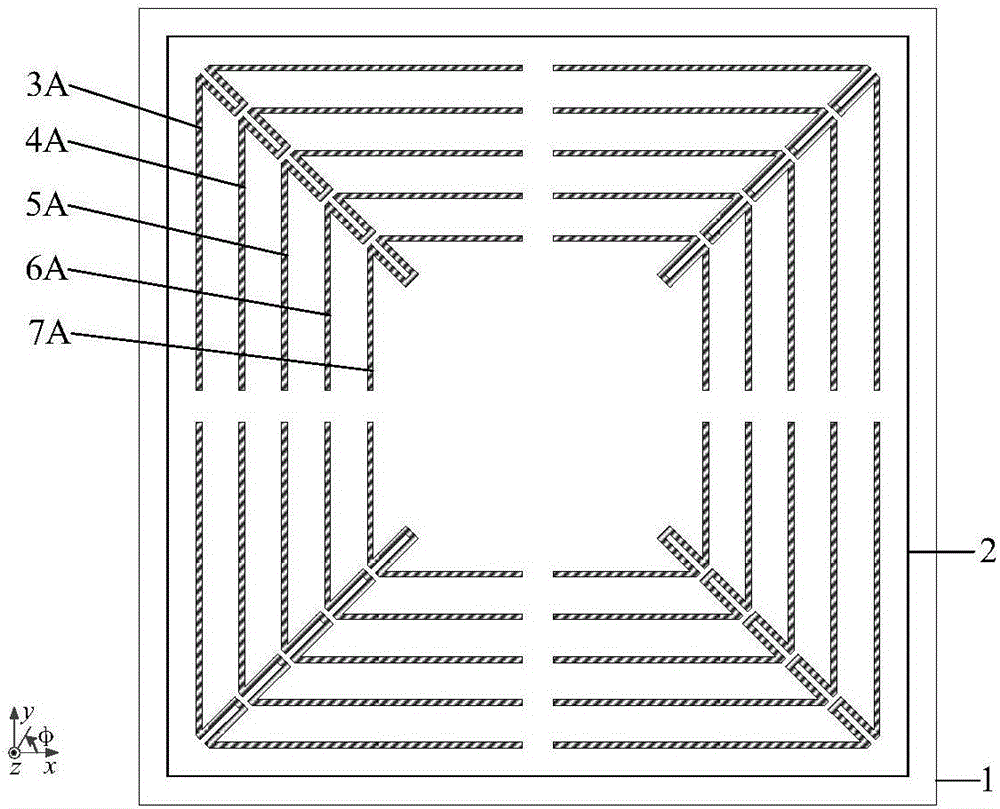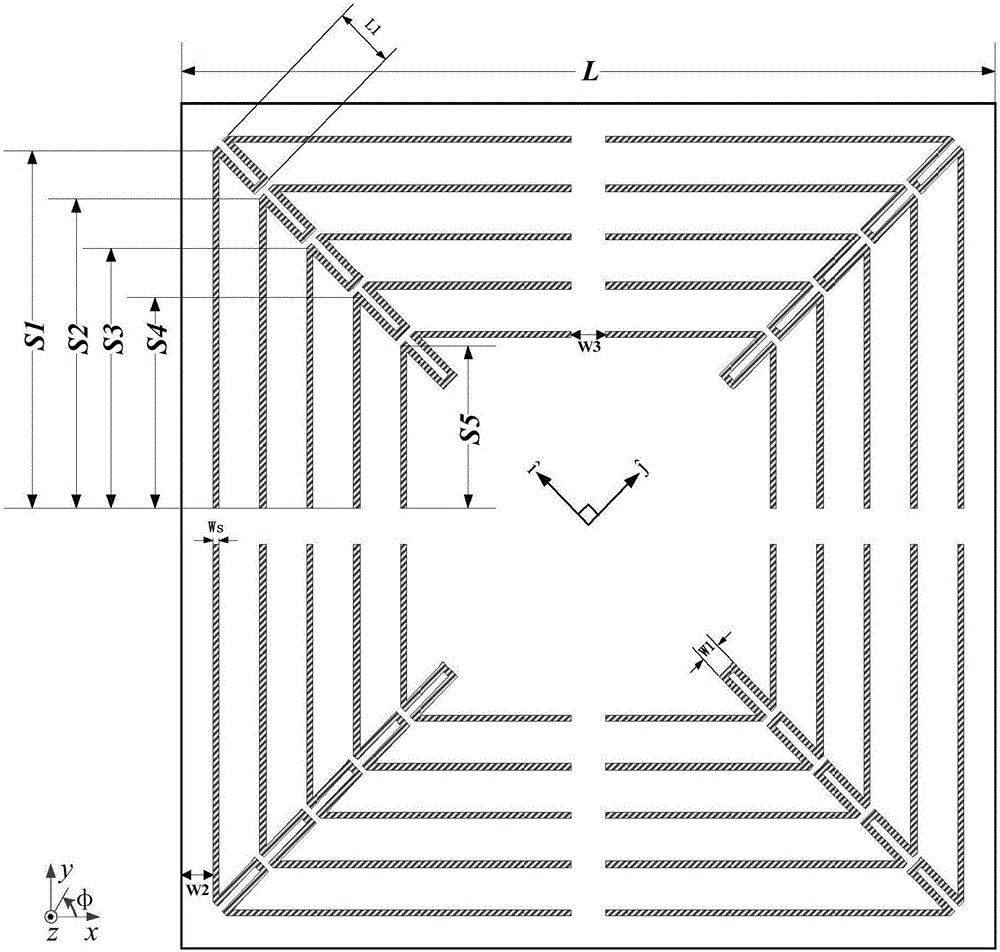Ultra-wideband dual-polarization chipless RFID label
An RFID tag and dual-polarization technology, applied in the field of the Internet of Things, can solve the problems of low frequency band utilization, large size, small tag capacity, etc., and achieve the effect of improved spectrum utilization, increased quality factor, and compact tags
- Summary
- Abstract
- Description
- Claims
- Application Information
AI Technical Summary
Problems solved by technology
Method used
Image
Examples
Embodiment
[0029] An ultra-wideband dual-polarized chipless RFID tag, comprising an antenna radiating unit 2 and a dielectric substrate 1, the antenna radiating unit 2 is located on the upper surface of the dielectric substrate 1, the antenna radiating unit is composed of a square patch, and the square There are four slotted structures on the patch, which are the first, second, third and fourth slotted structures respectively. The first and third slotted structures are located on the main diagonal of the square patch and are about The center of the square patch is symmetrical, and the second and fourth slot structures are located on the secondary diagonal of the square patch and are symmetrical about the center of the square patch.
[0030] The first, second, third and fourth slots have the same structure and are composed of at least one slot. When the number of slots is more than one, the slots are nested, and the slots are arrow-shaped reverse slot structures. .
[0031] The arrow-sha...
PUM
 Login to View More
Login to View More Abstract
Description
Claims
Application Information
 Login to View More
Login to View More - R&D
- Intellectual Property
- Life Sciences
- Materials
- Tech Scout
- Unparalleled Data Quality
- Higher Quality Content
- 60% Fewer Hallucinations
Browse by: Latest US Patents, China's latest patents, Technical Efficacy Thesaurus, Application Domain, Technology Topic, Popular Technical Reports.
© 2025 PatSnap. All rights reserved.Legal|Privacy policy|Modern Slavery Act Transparency Statement|Sitemap|About US| Contact US: help@patsnap.com



